Description
KOReD FLAT SHEET MEMBRANE BIOREACTOR
 |
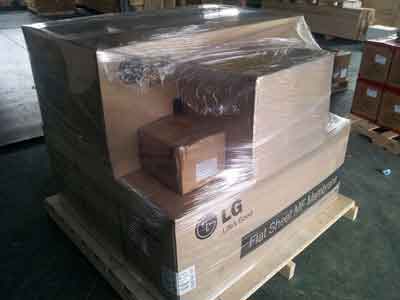 |
Manufacturers: KOReD - Korea
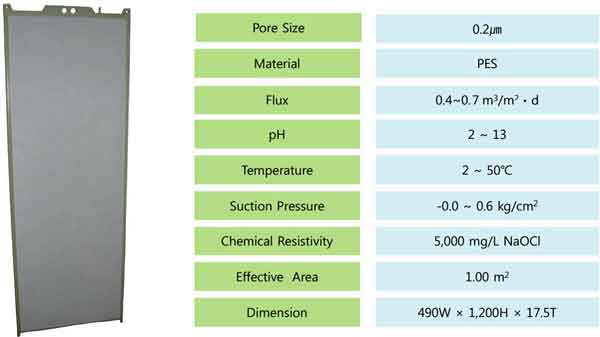
HIGHLY PERMEABLE MEMBRANE WITH HYDROPHILIC MATERIAL
The KOReD flat sheet membrane is composed of a permeable polymer material, PES (Polyethersulfone), differentiated from other materials such as PTFE and PP. It provides exceptional fouling resistance and permeability under conditions of sewage and wastewater treatment process and high concentration active sludge.
- Highly hydrophilic, showing selective permeation under high concentration sludge condition.
- Highly resistant to fouling under high concentration condition, as organic matters such as protein and microorganisms do not easily adhere
- More convenient to handle, as the pre-treatment process of increasing permeability is skipped.


HIGH ADHESIVENESS OF THE FLAT SHEET AND PANEL
The KOReD flat sheet module is produced with a facility that is specialized for membrane sheet ABS panel, providing high durability and adhesiveness and therefore usable even in bad conditions.
• Adhesiveness stronger by 25% compared to competitor

STABLE MEMBRANE WITH 3-LAYER STRUCTURE
The KOReD flat sheet is structured with 3 layers-membrane layer, supportive layer, and membrane layer again. Therefore it has 2 membrane layers. It double prevents membrane damage by foreign objects flowing in from sewage and wastewater processes.
• Stable treatment quality secured by increased durability with 3-layer membrane.
• The triple-layer filtration structure provides additional turbidity removal performance.

STABLE MEMBRANE WITH UNIFORM PORE SIZE DISTRIBUTION
The KOReD flat sheet membrane is manufactured using the NIPS (Non-Solvent Induced Phase Separation) process which is divided into the casting process, evaporation process, immersion process, and drying process. Each process plays a role in determining the shape, distribution,characteristics, and performance of the membrane pore. What enhances the LG flat sheet significantly is the optimization technology of solvent and non-solvent combination and the Six Sigma process.

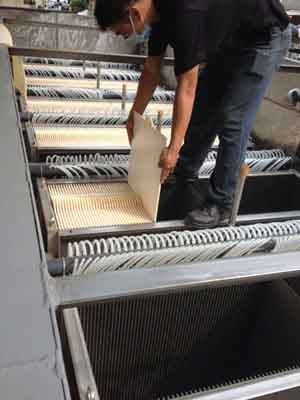 |
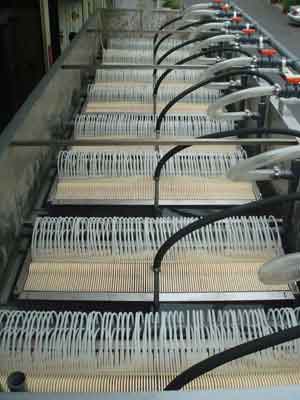 |
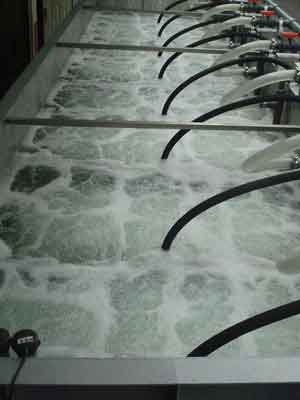 |
*** Lưu ý khi thiết kế Công nghệ Màng lọc MBR cho xử lý nước thải:
a. MÀNG TẤM PHẲNG
- Đối với nước thải sinh hoạt, nước thải bệnh viện: chọn công suất 0,6 m3/ tấm /ngày.
- Đối với nước thải công nghiệp: chọn công suất 0,5 m3/ tấm /ngày.
- Đối với nước thải sinh hoạt, nước thải bệnh viện: chọn công suất 0,4 m3/ tấm /ngày.
- Đối với nước thải công nghiệp: chọn công suất 0,3 m3/ tấm /ngày.
- Ghi chú: Nếu lưu lượng không điều hòa đều được trong 24 giờ do bể điều hòa nhỏ => Quý khách hàng bào cho chúng tôi để tư vấn chọn số màng MBR phù hợp.
- Nên tách bể Aerotank thành 02 Bể, Bể 1: Bể Aerotank thông thường, Bể 2: Bể Lọc Màng. Phù hợp cho việc vận hành sau này.
- Bơm hút nên chọn 02 bơm (01 chạy, 01 dự phòng) cho toàn 01 hoặc nhiều modul. Lưu lượng bơm hút gấp 02 lần công suất trung bình của hệ thống, cột áp bơm hút cần 10mH2O. Nên dùng Bơm ly tâm trục ngang tự mồi. Điều khiển 02 bơm này bằng biến tần (hoặc van).
- 01 Bơm rửa chọn bơm trục ngang đầu inox 304. Lưu lượng bơm rửa bằng 1/2 lần công suất trung bình của hệ thống, cột áp bơm rửa cần 10mH2O.
- Lắp đồng hồ đo áp âm (0,5kg/cm2 tại đầu vào bơm hút Màng).
- Lắp đồng hồ Lưu lượng Dạng cơ tại đầu ra, điều chỉnh lưu lượng qua bơm hút theo đúng công suất trung bình hệ thống.
- Ngoài lưu lượng cho đĩa phân phối khí trong bể đã có, Anh thiết kế thêm lưu lượng để sục dưới module màng.
- Tính lưu lượng khí: 15- 20 lần * lưu lượng nước thải/phút = ..... m3 khí/phút
- Có thể gộp chung lưu lượng cho bể + lưu lượng sục màng thành chung máy thổi khí hoặc làm riêng máy thổi khí. (ghi chú: thường hệ nhỏ dùng chung máy, hệ lớn dùng riêng.)
- Hóa chất rửa dùng Javel 10%...
